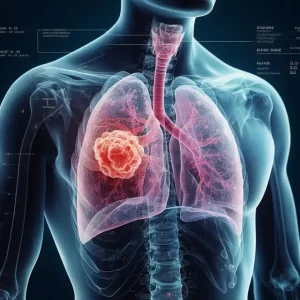Molecular mechanism of aging-induced imbalance of protein homeostasis
- EPA Announces First-Ever Regulation for “Forever Chemicals” in Drinking Water
- Kochi University pioneers outpatient bladder cancer treatment using semiconductor lasers
- ASPEN 2024: Nutritional Therapy Strategies for Cancer and Critically Ill Patients
- Which lung cancer patients can benefit from neoadjuvant immunotherapy?
- Heme Iron Absorption: Why Meat Matters for Women’s Iron Needs
- “Miracle Weight-loss Drug” Semaglutide Is Not Always Effective
Molecular mechanism of aging-induced imbalance of protein homeostasis
- Red Yeast Rice Scare Grips Japan: Over 114 Hospitalized and 5 Deaths
- Long COVID Brain Fog: Blood-Brain Barrier Damage and Persistent Inflammation
- FDA has mandated a top-level black box warning for all marketed CAR-T therapies
- Can people with high blood pressure eat peanuts?
- What is the difference between dopamine and dobutamine?
- How long can the patient live after heart stent surgery?
Nature | Molecular mechanism of aging-induced imbalance of protein homeostasis.
Aging is characterized by a progressive loss of the body’s physiological integrity or function over time and a progressively increased risk of death.
If the successful isolation of the first long-lived strain from C. elegans by Michael R. Klass in 1983 is defined as the “first year” of aging research (for a long time, the study of aging was considered pseudoscience) , the field of aging is only immediately To achieve a year of no confusion. In 2013, Manuel Serrano of the Spanish National Research Center published a review article The Hallmarks of Aging in Cell , summarizing the nine characteristics of aging in detail from a molecular point of view (as shown in the figure) , which are also like nine characteristics. The main road, although different roads have different scenery (ie various articles) , but the same goal, the purpose is to find the target that can delay aging, so as to obtain a “one pill”.

Among these nine characteristics, there is one called Loss of proteostasis (Proteostasis or protein homeostasis ) .
The so-called protein homeostasis is the use of a series of quality control mechanisms by cells to maintain the stability and functionality of its own proteome.
Thus, nascent proteins are a potential threat to proteostasis because nascent proteins are less stable and are relatively prone to misfolding.
The peptide chains that make up the protein are translated from mRNA under the binding of ribosomes.
The process of translation can be divided into translation initiation, translation extension and translation termination, and at the same time as translation, folding and transport also start at the same time ( co-translational pathway) .
The translation elongation stage is very important for protein homeostasis, because this process ribosomes move on the mRNA, the speed of which can change, and a brief slowdown will help protein folding, assembly, recruitment of molecular chaperones, etc.
If this Prolonged “slow down” time and changes in translation kinetics can lead to ribosome collisions, degradation or aggregation of nascent polypeptide chains, and even diseases such as neurodegenerative diseases.
Since protein homeostasis is a hallmark of aging, and translation affects protein homeostasis, does aging contribute to protein homeostasis by affecting translation?
Recently, Judith Frydman of Stanford University published the article Ageing exacerbates ribosome pausing to disrupt cotranslational proteostasis in Nature , using Caenorhabditis elegans and Saccharomyces cerevisiae as research models, and found that aging can change translation dynamics by The resulting exacerbation of ribosomal stalling unbalances protein homeostasis.

First, the researchers performed RIBO-Seq on C. elegans and Saccharomyces cerevisiae for different days and found that translation initiation decreased with aging, translation-related proteins such as ribosomal proteins decreased, but the expression of stress-related proteins increased ( This is consistent with previous research results) .
What about ribosome stalling? The researchers calculated the stall index for each site in the translated region, however, no age-related stall index was observed across the translation group, nor was the mean amino acid stall index significantly different.
This result appears to be different from the original assumption that aging does not bring about systemic stalling of translation elongation .
So the researchers looked at single-codon resolution and used a new statistical measure of ribosomal stalling Synthesis, and therefore the sequence of mRNA, affects ribosomal stalling, read the great review article Synonymous but not the same: the causes and consequences of codon bias by Joshua B. Plotkin of the University of Pennsylvania in 2011 ) .
Not surprisingly, the researchers found an increase in ribosomal occupancy , a measure of ribosomal stalling , at thousands of sites with aging , and these sites were enriched in genes related to protein homeostasis and translation , and on genes corresponding to co-translational ubiquitinated polypeptide chains. Importantly, ribosomal stalling favors proline (neutral) , arginine (basic), and lysine (basic) .
It should be noted that since there is an amino acid preference for ribosome arrest, and this amino acid sequence property exists in both young and senescent cells, ribosome arrest also exists in young cells.
Ribosome stagnation “prolonged time” will lead to ribosome collision . Since the sequence is the same, is the collision of ribosomes the same in the case of young and old?
The researchers looked at the performance of regions prone to double ribosomes in young cells in senescent cells and found that the likelihood of double ribosome formation was increased in the presence of aging, a result that implies that aging promotes ribosome collisions, Especially in the polybasic amino acid region.
Ribosome collisions are harmful to cells, so cells initiate ribosome -associated quality control ( RQC ) for newly generated peptide chains, such as the recognition of colliding ribosomes by Hel2 and the formation of collided ribosomes by Rqc2. CAT tail (C-terminal alanine and threonine tail) and through Ltn1/Rkr1 ubiquitination, RQC aberrations lead to nascent chains forming aggregates.
Using reporter gene experiments, the researchers found that nascent peptide chains with ribosome retention in young cells were effectively degraded, while nascent peptide chain aggregates were formed in senescent cells.
However, such aggregates were not affected by culture medium or metabolism. The state changes appear, and in turn proves that RQC anomalies can affect lifespan.
In conclusion, this study reveals that aging can affect ribosomal stalling, and that ribosomal-related quality control systems fail to promptly remove abnormal nascent peptide chains, leading to the appearance of aggregates and thus an imbalance in protein homeostasis.
Original link:
https://doi.org/10.1038/s41586-021-04295-4
Molecular mechanism of aging-induced imbalance of protein homeostasis
(source:internet, reference only)
Disclaimer of medicaltrend.org
Important Note: The information provided is for informational purposes only and should not be considered as medical advice.



